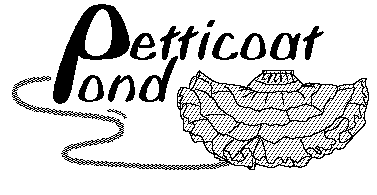

Excerpts from
"Descriptionary (A Thematic Dictionary)"
Contributed by Elizabeth
There is a book is titled "Descriptionary (A Thematic Dictionary)" and subtitled "For When You Know What It Is But Not What It's Called". The author is Marc McCutcheon. It is copyrighted 1992 by Marc McCutcheon. The ISBN is 0-8160-2487-1. The book was published by Facts on File, Inc., 460 Park Avenue South, New York, NY 10016.
This resource covers 22 areas where descriptions are given for various words. One of the areas is "Clothing." The clothing section includes descriptions for Coats, Jackets, Sport Jackets, Sweaters, Shirts, Tops, Collars, Skirts, Dresses, Pants, Footwear, Caps and Hats, Glasses and Sunglasses, Fabrics and Fabric Designs, Fashion Styles, Clothing of the 19th Century, the 18th Century, the 17th Century, the 16th Century, clothing of Medieval England and France, clothing of Ancient Rome, and clothing of Ancient Greece.
Here’s how the Descriptionary described some of our favorite garments:
From the "Skirts" descriptions:
"Bouffant" - Any full, gathered skirt.
"Crinoline" - An understructure of fabric worn to puff out skirts.
"Hoop" - Any skirt puffed out in a bell, cone, or pyramid shape by a crinoline or hoops.
"Square Dance" - A full, puffed-out skirt with ruffled hem.
"Bell" - A large, full skirt gathered at the waist and flaring like a bell to the hem, sometimes worn with hoops underneath, popular intermittently since mid-1800’s.
"Bubble" - A skirt gathered at the waist then puffing out and tapering - like a bubble; popular in the 1950’s. Also known as a "Tulip Skirt".
From the "Dresses" descriptions:
"Bouffant" - A dress having a snug-fitting bodice and a full, bell-shaped pleated or ruffled skirt.
"Square Dancing" - A dress having puffed sleeves and a full, circular skirt, for square and folk dancing.
"Bubble Dress" - A dress having a fitted bodice and a full, bubble-like skirt, popular in the late 1950’s.
From the "Clothing of the 19th Century" descriptions:
"Crinoline" - A dome, funnel, or pyramidal-shaped understructure made of whalebone or spring hoops used to distend or widen skirts to as large as 18 feet in circumference. The skirt itself was often hitched up to show a scarlet petticoat underneath.
"Bloomers" - Frilled trousers gathered about the ankles and worn under a short skirt.
"Paletot" - A large jacket that spread over a crinoline dress. Also, a short overcoat for men.
From the "Clothing of the 18th Century" descriptions:
"Hoop" - A hooped petticoat used for puffing out skirts.
"Petticoat" - The name used for a woman’s skirt.
"Sack" - A voluminous gown with a back having box pleats stitched down each side.
From the "Clothing of the 17th Century" descriptions:
"Farthingale" - The hooped understructure of a hoop skirt. Also, the skirt itself.
"Petticoat Breeches" - Voluminously wide, pleated pants, reminiscent of a skirt, worn by men.
From the "Clothing of the 16th Century" descriptions:
"Farthingale" - A hooped understructure employed to widen a woman’s skirt from the waist down. Also, the skirt worn over this understructure.
"Petticoat" - An underskirt.
From the "Clothing of Medieval England and France" descriptions:
"Brayette" - A steel petticoat, similar to a baguette. (Also in the book: Description of a "Baguette" - A lappet of mail.)
"Frounce" - A flounce.
"Petticoat" - A small coat worn under a larger one in the late 15th century.
LISA's dictionary contains some pertinent definitions as well